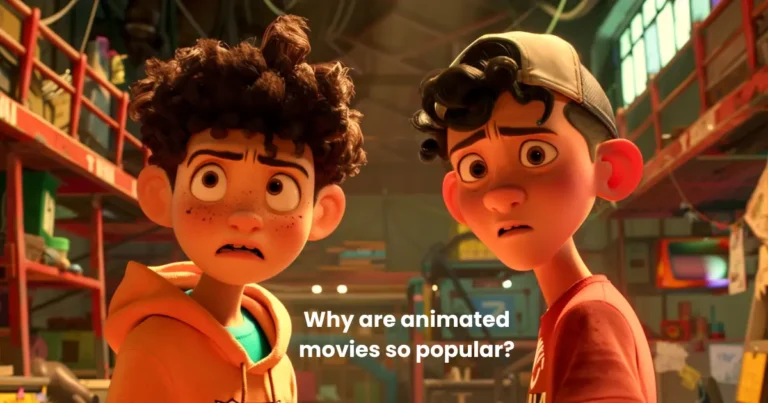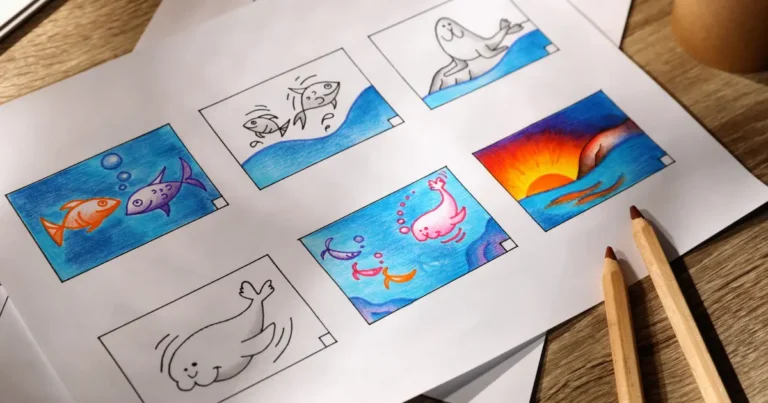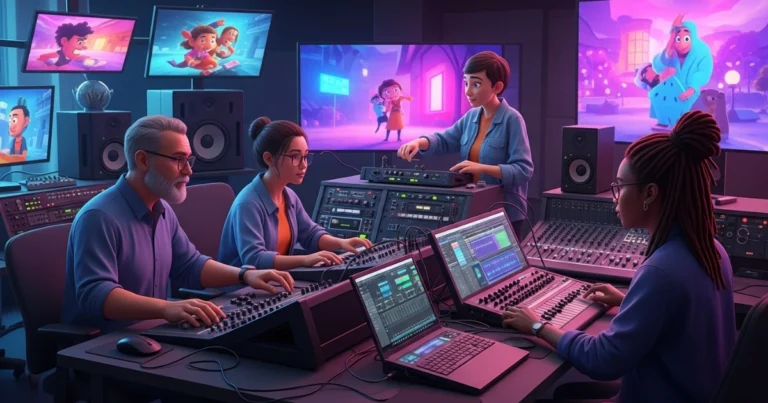What is Object Animation: Ultimate guide about stop motion animation in 2025

Contents
- 1 Defining Object Animation
- 2 History of Object Animation
- 3 Key Techniques in Object Animation
- 4 Tools Used in Object Animation
- 5 Applications of Object Animation
- 6 Future of Object Animation
Animation is a fascinating art form that brings stories, ideas, and characters to life. While most people are familiar with character-based animations, a unique subset called object animation takes a different approach. Instead of focusing on animated characters or creatures, object-based animation gives life to inanimate objects, making them appear as if they are moving or acting independently.
This innovative style of animation has captured audiences’ imaginations for decades, blending creativity with technical precision. Whether it’s a teapot dancing on a table or a pencil writing on its own, object animation turns everyday items into the stars of the show.
In this article, we’ll explore the intricacies of object animation, its techniques, applications, and the tools that make it possible. By the end, you’ll gain a deep understanding of what makes this animation style so unique and its significance in modern media.
Defining Object Animation
Object animation is a specialized animation technique that breathes life into inanimate objects, transforming them into dynamic, moving entities. Unlike traditional animation, which often revolves around human or animal characters, object-based animation focuses on items like furniture, tools, toys, or other physical objects, using them as the primary subjects of movement and storytelling.
This style of animation is achieved by carefully manipulating objects frame by frame, capturing their incremental movements, and then sequencing these frames to create the illusion of fluid motion. This method can be done using traditional stop-motion techniques or digital software for enhanced flexibility and effects.
What Sets Object Animation Apart?
- Physical Realism: Because real-world objects are used, there is an inherent tangibility and authenticity to the animations.
- Unconventional Storytelling: By animating everyday items, object-based animation challenges traditional narrative forms and opens up new creative possibilities.
In essence, object animation is both an art and a technical craft that allows creators to reimagine how audiences perceive ordinary objects, turning them into compelling visual elements.
History of Object Animation
The history of object-based animation is deeply intertwined with the evolution of animation itself, particularly stop-motion techniques. This art form emerged as early animators experimented with bringing non-living objects to life, pushing the boundaries of what could be achieved in visual storytelling.

Early Beginnings
The roots of object animation date back to the late 19th and early 20th centuries. Early pioneers like Georges Méliès, a French filmmaker, used stop-motion techniques to create magical effects in films. In these early experiments, objects were moved incrementally between frames, creating the illusion of motion when played in sequence.
The Rise of Stop-Motion Object Animation
By the 1920s and 1930s, object-based animation gained significant traction. Some iconic early examples include:
- The Lost World (1925): This film showcased stop-motion techniques to animate dinosaurs using models, laying the groundwork for future advancements.
- King Kong (1933): The animation of King Kong and other creatures in the film used a blend of stop-motion and live-action integration, highlighting the creative potential of object animation.
Golden Age of object-based animation
During the mid-20th century, filmmakers like Ray Harryhausen revolutionized stop-motion animation by applying it to objects and puppets in films such as Jason and the Argonauts (1963). These productions demonstrated the storytelling power of animated objects, bringing mythical creatures and props to life with unprecedented realism.
The Transition to Digital Object Animation
The late 20th and early 21st centuries marked the transition from traditional stop-motion techniques to digital object animation. Software advancements like Autodesk Maya and Blender made it possible to simulate realistic object movements without the need for physical props. This shift expanded the scope of object-based animation, allowing for more intricate and dynamic scenes in movies, advertisements, and video games.
Object Animation in Modern Media
Today, object animation remains a vital technique in both traditional and digital formats. While stop-motion continues to captivate audiences in films like Coraline (2009) and Kubo and the Two Strings (2016), digital object-based animation dominates industries like advertising and gaming. The blend of old and new techniques ensures that object-based animation remains an innovative and enduring art form.
By evolving alongside technology and storytelling needs, object-based animation has carved out a unique niche in the animation world, blending history, creativity, and technical prowess.
Key Techniques in Object Animation
Object animation relies on a range of techniques to bring inanimate objects to life, blending traditional craftsmanship with modern technology. These techniques determine how objects are manipulated and captured to create the illusion of motion. Below are some of the most prominent methods used in object-based animation:

1. Stop-Motion Object Animation
Stop-motion is the foundational technique in object animation, where physical objects are moved incrementally and photographed frame by frame. When played sequentially, these frames create the appearance of smooth motion.
Steps in Stop-Motion Animation:
- Setup: Arrange the object and scene with proper lighting and a stable background.
- Incremental Movement: Adjust the object slightly for each frame to simulate realistic motion.
- Frame Capture: Photograph each new position using a high-resolution camera.
- Playback and Refinement: Compile the frames into a video sequence and fine-tune the timing.
Examples:
- Claymation: Uses malleable materials like clay to create flexible objects.
- Puppet Animation: Employs puppets with movable joints for more complex movements.
2. Digital Object Animation
Digital object-based animation utilizes software to simulate the motion of objects in a 2D or 3D environment. This method eliminates the need for physical props, offering greater flexibility and precision.
Steps in Digital Object Animation:
- Modeling: Create a 3D object using software like Blender or Maya.
- Rigging: Add a virtual skeleton or control points to enable movement.
- Animation: Manipulate the object within the software, setting keyframes to define motion.
- Rendering: Produce the final output with lighting and texturing for a realistic look.
Examples:
- Virtual simulations of falling dominoes or spinning coins.
- CGI-based object animation in films and games.
3. Pixilation
Pixilation is a hybrid technique where live-action actors interact with animated objects. The objects are manipulated frame by frame, while the actors pose in static positions to maintain consistency with the animated sequence.
Key Features:
- Combines human performance with object-based animation.
- Often used for surreal or comedic effects in short films and commercials.
4. Motion Capture for Objects
Motion capture (mocap) technology can also be applied to object animation. Sensors track the movement of real-world objects, translating their motion into digital environments for seamless animation.
Applications:
- Animating props in movies or games.
- Creating dynamic product demonstrations in advertisements.
Combining Techniques
Many animators combine these techniques to achieve unique effects. For example, a project might use stop-motion for physical objects and digital animation for post-production enhancements. This hybrid approach expands the creative possibilities of object-based animation.
Whether using traditional or digital methods, these techniques form the backbone of object animation, enabling animators to transform everyday items into engaging storytelling tools.
Tools Used in Object Animation
Creating object-based animation requires a combination of physical equipment and digital tools. These resources are essential for designing, manipulating, and capturing the motion of objects, whether in a traditional stop-motion setup or a modern digital environment. Below is a breakdown of the tools commonly used in object animation:

1. Physical Equipment for Stop-Motion Object Animation
For traditional object-based animation, tangible tools and equipment are necessary to set up scenes and capture movements.
a. DSLR Cameras
- High-quality cameras like Canon EOS or Nikon D-series are essential for capturing detailed frames.
- Features such as manual focus, adjustable exposure, and high resolution make them ideal for stop motion.
b. Tripods and Camera Rigs
- Ensures camera stability to maintain consistent framing between shots.
- Advanced rigs allow for smooth, incremental adjustments to camera angles.
c. Lighting Equipment
- Continuous lighting with adjustable intensity and direction is crucial to prevent shadows and maintain consistent illumination.
- Tools: Softboxes, LED panels, or ring lights.
d. Animation Stages and Sets
- Miniature stages or backdrops are designed to create the animated environment.
- Materials like foam boards, clay, or wood are often used to build customizable sets.
e. Object Manipulation Tools
- Fine tools like tweezers, wires, or magnets are used to precisely adjust small object movements.
2. Software for Digital Object Animation
Modern object-based animation often relies on digital tools to simulate motion, create realistic effects, and streamline workflows.
a. Blender
- Free and open-source 3D animation software.
- Used for modeling, rigging, and animating objects in virtual environments.
b. Autodesk Maya
- A professional-grade tool for 3D modeling and animation.
- Widely used in the film and gaming industries for complex object-based animations.
c. Dragonframe
- A specialized stop-motion animation software.
- Offers frame-by-frame control, onion skinning, and camera integration for traditional object animation.
d. After Effects
- Used for adding motion graphics, compositing, and post-production effects to animated sequences.
e. Motion Capture Software
- Tools like MotionBuilder or Rokoko Studio can record and replicate real-world object movements in digital form.
3. Auxiliary Tools and Accessories
a. Editing Software
- Adobe Premiere Pro or Final Cut Pro: Used for assembling and editing animated sequences.
- DaVinci Resolve: Ideal for color grading and enhancing visuals.
b. 3D Printers
- Allows animators to create custom props and objects tailored to specific animation needs.
c. Controllers and Rigs
- Armature rigs or puppetry controllers help animate objects with precision.
- Used for stop-motion or interactive object manipulation.
d. Storage and Backup Devices
- External hard drives and cloud storage are vital for preserving animation files and project backups.
Choosing the Right Tools for Object Animation
The choice of tools depends on the animation method (traditional vs. digital) and the project’s scope. For stop-motion, a reliable camera and physical props are essential, while digital animation leans heavily on advanced software and computing power.
By combining the right tools with creativity, animators can bring inanimate objects to life, producing visually stunning and captivating sequences.
Applications of Object Animation
object-based animation is a versatile medium with wide-ranging applications across industries. By animating inanimate objects, creators can produce engaging content that is both visually striking and emotionally resonant. Below are some of the key areas where object animation is prominently used:

1. Entertainment Industry
Object animation has a long-standing presence in movies, TV shows, and short films. Its unique style brings a sense of realism and whimsy to visual storytelling.
- Stop-Motion Films: Iconic films like Coraline and The Nightmare Before Christmas use stop-motion object-based animation to captivate audiences.
- Special Effects: object-based animation is used to animate props or elements that interact with live-action sequences.
- TV and Web Series: Animated shorts often feature object-based animation to create quirky, memorable characters from everyday items.
2. Advertising and Marketing
object-based animation is a powerful tool for brands aiming to create eye-catching and relatable campaigns.
- Product Promotions: By animating products, advertisers can highlight features in a fun and engaging way. For example, an animated coffee mug could demonstrate a product’s durability or aesthetic appeal.
- Social Media Campaigns: Short, animated videos featuring objects are popular on platforms like Instagram and TikTok, capturing attention quickly.
- Brand Mascots: Companies often create animated object-based mascots to build brand identity (e.g., M&M’s animated candies).
3. Education and Training
The dynamic nature of object animation makes it ideal for teaching and training purposes.
- Explaining Concepts: Animated objects, such as gears or molecules, are used to explain scientific and technical concepts visually.
- E-learning Modules: Interactive animations featuring objects enhance user engagement in online courses.
- Kids’ Education: Using animated toys or household items helps younger audiences grasp educational content in a fun, relatable manner.
4. Gaming Industry
object-based animation plays a significant role in video game design, particularly in creating engaging environments and gameplay mechanics.
- Interactive Props: Animated objects like weapons, tools, or vehicles add realism to gaming worlds.
- Puzzles and Challenges: Games often feature animated objects in puzzles or tasks, such as moving blocks or levers.
- Cinematic Sequences: Pre-rendered animations of objects enhance storytelling in games.
5. Art Installations and Exhibits
Object animation adds an interactive and dynamic element to artistic and cultural displays.
- Museum Displays: Animating artifacts or replicas can help convey historical stories or scientific processes.
- Interactive Installations: Artists use object-based animation to create moving sculptures or digital projections that captivate audiences.
- Virtual Exhibits: In digital museums, animated objects help simulate real-world experiences.
6. Social Awareness Campaigns
This animation is increasingly used in campaigns to spread awareness about social issues.
- Public Service Announcements (PSAs): Animated objects, like plastic bottles or food waste, are used to depict environmental and societal issues effectively.
- Nonprofit Campaigns: Organizations use object animation to tell impactful stories, often with a humorous or emotional touch.
7. Commercial Packaging and Retail
Retailers and packaging designers use object animation to create a visual connection with customers.
- Interactive Packaging: QR codes on products lead to animations showcasing their features.
- Retail Displays: Animated objects on digital screens attract customers’ attention in stores.
The applications of this animation span diverse fields, from entertainment and education to advertising and gaming. Its ability to transform ordinary objects into engaging visual elements makes it a valuable tool for creators seeking to tell compelling stories and communicate ideas effectively. This versatility ensures that object-based animation will continue to evolve and find new uses in emerging industries.
Future of Object Animation
The future of object animation is shaped by technological advancements, growing demand for innovative content, and evolving audience expectations. As both traditional and digital techniques continue to advance, this animation is poised to remain a vital and evolving art form across various industries.
1. Integration of Artificial Intelligence (AI)
AI is revolutionizing animation, enabling faster workflows and more complex movements. In object animation, AI tools can:
- Automate Repetitive Tasks: AI algorithms can handle tedious frame-by-frame adjustments, allowing animators to focus on creativity.
- Simulate Physics: AI-powered physics engines help animate realistic object interactions, such as collisions, weight shifts, and texture changes.
- Generate Ideas: AI can assist in brainstorming object-based animation concepts by analyzing trends and audience preferences.
2. Growth of Virtual and Augmented Reality (VR/AR)
Object animation is becoming increasingly prominent in immersive experiences like VR and AR.
- Virtual Environments: Animated objects in VR create interactive, lifelike experiences for games and simulations.
- AR Applications: Animated objects are integrated into real-world settings via AR, revolutionizing industries like retail, education, and marketing.
- 360° Animation: object-based animation designed for 360° viewing immerses users in dynamic, multi-angle narratives.
3. Advancements in Digital Tools
Cutting-edge animation software continues to expand the possibilities of object-based animation.
- Real-Time Rendering: Tools like Unreal Engine and Unity enable real-time rendering, speeding up production while maintaining quality.
- Enhanced Motion Tracking: Advances in motion capture technology allow animators to track and animate real-world objects with unparalleled precision.
- Hybrid Techniques: Combining traditional stop-motion with digital effects provides a unique blend of authenticity and modernity.
4. Sustainable Animation Practices
With an increasing emphasis on sustainability, the future of object-based animation is likely to include environmentally conscious approaches:
- Recycled Materials: Using eco-friendly materials for physical props in stop-motion projects.
- Digital Dominance: As digital tools reduce the need for physical resources, digital object animation will become a greener alternative.
- Virtual Collaboration: Cloud-based animation platforms allow remote teams to work together, minimizing the carbon footprint associated with studio setups.
5. Expansion in Non-Traditional Media
object-based animation is finding new applications in emerging media formats.
- Interactive Content: Animated objects in interactive videos or games create deeper engagement.
- Holographic Displays: Advancements in holography will allow object animations to appear as 3D projections, transforming public exhibits and advertisements.
- AI-Generated Animation: Machine learning models like OpenAI’s DALL-E could generate object-based animation autonomously, opening up creative opportunities.
The future of object animation is dynamic, blending traditional techniques with emerging technologies like AI, VR/AR, and sustainable practices. These advancements will not only streamline workflows but also open up new creative possibilities. As a versatile and impactful medium, object-based animation will continue to evolve, influencing industries ranging from entertainment and education to advertising and art.
Conclusion
Object animation is a remarkable art form that has transformed how stories are told through inanimate objects. Its evolution from traditional stop-motion techniques to advanced digital animation has allowed creators to push the boundaries of creativity and innovation. By breathing life into everyday items, object-based animation captivates audiences with its charm and versatility, making it a valuable tool across industries like entertainment, education, advertising, and gaming. Its ability to evoke emotions, communicate complex ideas, and engage viewers ensures its continued relevance in the world of visual storytelling.
Looking ahead, the future of object-based animation is bright, driven by technological advancements such as AI, VR, and AR. These tools are not only simplifying workflows but also enabling animators to create more immersive and interactive experiences. As sustainability and accessibility become central to animation practices, this animation is set to evolve into an even more impactful medium. Whether in a blockbuster film, a viral advertisement, or an educational module, object animation will continue to inspire, innovate, and leave a lasting impression on global audiences.






